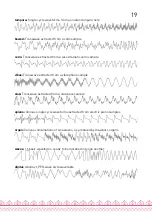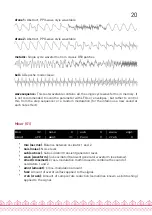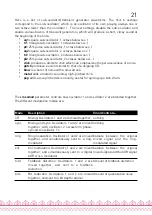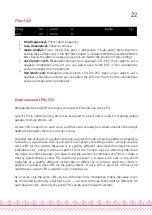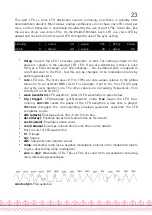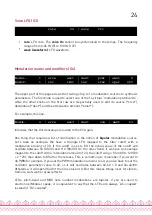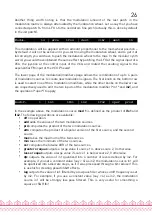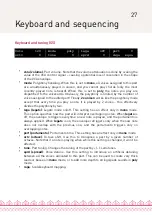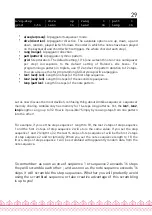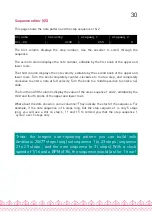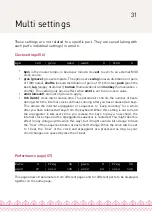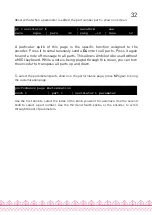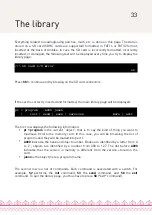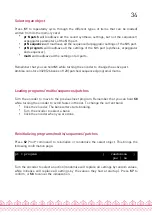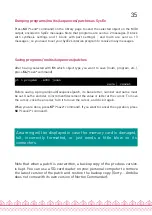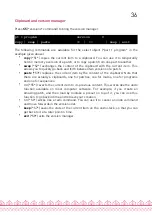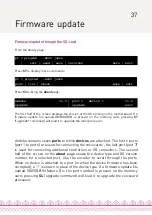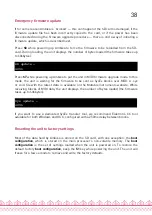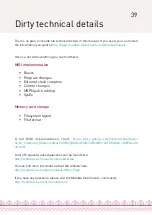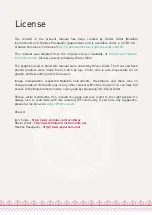
Keyboard and sequencing
Keyboard and tuning (S5)
Volu 120
| mode poly
| lega off
| port 0
octv 0
| tune 0
| sprd 0
| raga equa
•
volu (volume)
: Part volume. Note that the volume attenuation is done by scaling the
value of the VCA control signal – causing a potential loss of resolution in the shape
of the VCA envelope.
•
mode
: Polyphony handling. When this is set to
mono
, all voices assigned to this part
are simultaneously played in unison, and you cannot play chords (only the most
recently played note is heard). When this is set to
poly
, the notes you play are
dispatched to the voicecards. Obviously, the polyphony is limited by the number of
voices assigned to the edited part! Finally,
2x unison
works like the polyphony mode
except that every time you play a note, it is played by 2 voices – this effectively
divides the polyphony by two.
•
lega (legato)
: Legato mode on/off. This setting has an effect only in
mono
mode.
This option specifies how the part will interpret overlapping notes. When
legato
is
off, the envelope retriggers everytime a new note is played, and the portamento is
always applied. When
legato
is on, the envelope retriggers only when the new note
does not overlap with the previous one, and the portamento triggers only on
overlapping notes.
•
port (portamento)
: Portamento time. This setting has an effect only in
mono
mode.
•
octv (octave)
: Octave shift. Use this to transpose a part by a given number of
octaves. Note that if a note is playing when while this setting is changed, it won’t be
affected.
•
tune
: Part tuning. Changes the tuning of the part by +/- 1 semitones.
•
sprd (spread)
: Voice detune. Use this setting to introduce an artificial detuning
between all the voices allocated to this part. This can be used to create very thick
leads or basses in
mono
mode, or to add more depth to strings/pads sounds in
poly
mode.
•
raga
: Scale/keyboard mapping.
27







